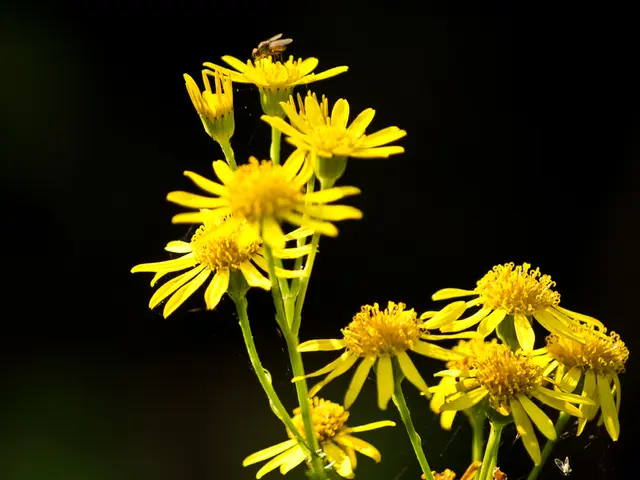Bloodstone is considered an alternative birthstone for March, attributed to its deep red color that symbolizes strong feelings and emotional intensity, much like the passion and energy many associate with the month of March.
Bloodstone, a captivating gemstone with a rich heritage, has been one of the earliest gemstones used by humans and is traditionally associated with March birthstones. Known for its distinctive red spots resembling droplets of blood on a dark green chalcedony surface, it has earned the name 'heliotrope'[1].
This unique appearance is due to iron oxide inclusions embedded within the microcrystalline quartz[1]. Bloodstone forms deep within the Earth's mantle, typically inside igneous rocks like basalt, as magma cools and crystallizes[1].
Throughout history, bloodstone has held a rich tradition of symbolic meanings and legends. It was believed to possess mystical powers related to blood and healing. Ancient lore often described bloodstone as a stone connected to life force and protection, sometimes thought to have fallen from the blood of Christ, giving it a sacred and powerful status[3].
Historically, it was used as a talisman by warriors and sailors for protection and bravery, embodying physical and spiritual strength[3]. The Ancient Egyptians believed bloodstone could make an individual stronger and more stealthy in battle, possibly even invisible to their enemies[4]. Bloodstone intaglios could be placed in signet rings and used as melted wax seals.
In contemporary jewelry designs, bloodstone is commonly found in polished oval or emerald-shaped cabochons. It was typically fashioned into amulets and carved with a family's coat of arms or crest[2]. Bloodstone can also have inclusions of other colours such as yellow or white, but red is the most well-known and popular[2].
Bloodstone can be found in various countries, including India, Brazil, Australia, Germany, the United States, Italy, and South Africa[2]. An example of this form can be found at the Waddesdon Bequest at the British Museum[2]. Bloodstone has been used in snuff boxes and for pietra dura inlay, cabinet doors, and larger furniture items[2].
When cleaning bloodstone, use a soft cloth or brush and warm, soapy water[4]. Bloodstone is tough and resistant to fractures and chipping, but care should be taken when wearing it due to its hardness on the Mohs scale[4].
Historically, bloodstone is sometimes considered the more 'traditional' choice for the month of March compared to the more commercially successful and widely-known beryl, aquamarine[1]. However, bloodstone's deep green base speckled with red makes it visually distinctive and symbolically powerful, securing its role as both a significant birthstone and a gem revered for centuries in myth and tradition[1][3].
References: [1] GemSelect. (n.d.). Bloodstone. Retrieved from https://www.gemselect.com/gemstones/bloodstone.html [2] British Museum. (n.d.). Bloodstone. Retrieved from https://www.britishmuseum.org/collection/term/BLOODSTONE [3] The Gem Guide. (n.d.). Bloodstone. Retrieved from https://www.thegemguide.com/gemstones/bloodstone [4] International Gem Society. (n.d.). Bloodstone. Retrieved from https://www.gemsociety.org/education/gem-encyclopedia/bloodstone.html
- In contemporary jewelry designs, bloodstone is commonly found in polished oval or emerald-shaped cabochons, often fashioned into amulets and carved with a family's coat of arms or crest.
- Aside from jewelry, bloodstone has been used in various applications, such as snuff boxes, pietra dura inlay, cabinet doors, and larger furniture items.
- When cleaning bloodstone, use a soft cloth or brush and warm, soapy water, as it is tough and resistant to fractures and chipping, but care should be taken when wearing it due to its hardness on the Mohs scale.
- In the realm of gemmology, bloodstone is a gemstone of interest, and several publications have been dedicated to its study and appreciation.
- For those pursuing a career in gemmology, diploma courses, workshops, and publications can offer valuable insights into the world of bloodstone and other gemstones.
- Owning a piece of bloodstone could not only be a testament to one's love for fashion-and-beauty, but also a connection to centuries-old myths and traditions.
- One's lifestyle can benefit from the symbolic significance of a bloodstone piece, as it serves as a reminder of strength, protection, and vitality, and can even be a unique representation of relationships, pets, travel, cars, shopping, home-and-garden, and food-and-drink experiences.




